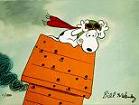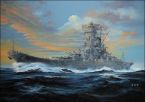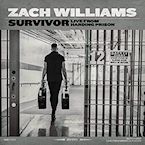witpqs
Posts: 26087
Joined: 10/4/2004
From: Argleton
Status: offline

|
quote:
ORIGINAL: Dixie
For what it's worth, Bomber Command in Europe was a vastly different organisation to the RAF operating out of India. For most of the war in India/Burma there just wasn't the support to mount mass raids, not even on the scale you've managed here, for a few reasons.
Navigation over a featureless jungle with (from what I remember) poor maps at 7000 was not (is not) a good idea, and pretty difficult. If they aren't flying over jungle then they're flying over the sea instead, which is just as featureless.
They have navigators who can use the radio systems someone described above, celestial navigation, dead reckoning, landmarks, and whatever else I don't know, all depending on what was available due to weather, etc. I'm not saying it's easy, but the game does not give anywhere near as good results to night bombing as it does to day bombing. Pilots have posted on these forums about what you can see with even little moonlight if the moon is high enough. Again, I'm not saying it's easy, but there is no way that the results the game gives to night bombing is anywhere near as good as it gives to day bombing.
quote:
There just wasn't the number of aircraft available to mount the size of raid we're talking about.
The aircraft were, in the main, tired and overworked. Both factors lead to more u/s aircraft and thus a decrease in available numbers.
Not a night bombing issue.
quote:
Spares and ground crews were lacking, especially compared to Europe, in combination with the tired aircraft you've got more a/c u/s.
Not a night bombing issue.
quote:
For RAF units in particular, long range types were often required to keep some aircraft on standby to search for downed aircrew over the Bay of Bengal.
Not a night bombing issue.
quote:
Weather would curtail ops, no-one would send up 100+ heavy bombers at night in heavy storms to fly at 7000 feet.
Barely a night bombing issue - really a weather issue. The game does account for the effects of weather. As we well know by now, the game engine has a lot of variables and you might get a good outcome in bad weather. This represents breaks in the clouds, openings in the storms, etc. that allow a raid to go in. As we see from many posted combats bad weather is definitely a limiter on combat results as well (and often spawns complaints like "Why don't my planes hit anything?"). The weather displayed in the combat report is the weather over that hex during that phase of the turn, and does not reflect the 'die rolls' built into the game to provide uncertainty about the exact nature of the weather at the time and point of attack (those breaks in the clouds, let-ups in the storms, etc.).
As for the decision process "no-one would send up..." how exactly is that carried out? Based upon the forecast (press the '3' key or the 'K' key)? That is very often wrong. I suggest that the weather as listed (meaning during that phase of the turn in that hex) is not known for any certainty to the (little electronic) commanders that the player delegates to during turn execution at the time they make that decision. The decision to go or no go is (as I see it) two steps. First, the human player either gives the orders or does not give the orders, and has the (highly imprecise) weather forecast at his disposal. Second, during turn execution the little electronic commanders might cancel based upon weather at the launching base (or ship), or based upon other factors built into the engine (morale, fighter escort, etc.).
quote:
Most of those aren't the fault of, or controllable by, the player. Except altitude.
And, what about the pilots skills/experience in the night attacks being cited in this thread?
I see this thread promoting as way, way too little information used - to the exclusion of other information - to call for changes to the game engine.
|
 Printable Version
Printable Version




















 New Messages
New Messages No New Messages
No New Messages Hot Topic w/ New Messages
Hot Topic w/ New Messages Hot Topic w/o New Messages
Hot Topic w/o New Messages Locked w/ New Messages
Locked w/ New Messages Locked w/o New Messages
Locked w/o New Messages Post New Thread
Post New Thread